Reflecting on a decade of PANORAMA
In 2014 the International Union for Conservation of Nature (IUCN) World Parks Congress was held in Sydney, Australia with a theme of “Parks, People, Planet: Inspiring Solutions,” and fittingly, this event served as an inspiration for the launch of PANORAMA – Solutions for a Healthy Planet ten years ago.
Though the roots of PANORAMA date back even further, springing forth from the Blue Solutions initiative, this year we’re looking back on the origin, evolution and impact a decade after this important collaboration led by Deutsche Gesellschaft für Internationale Zusammenarbeit (GIZ) and IUCN – PANORAMA – began.
The origin and evolution of PANORAMA
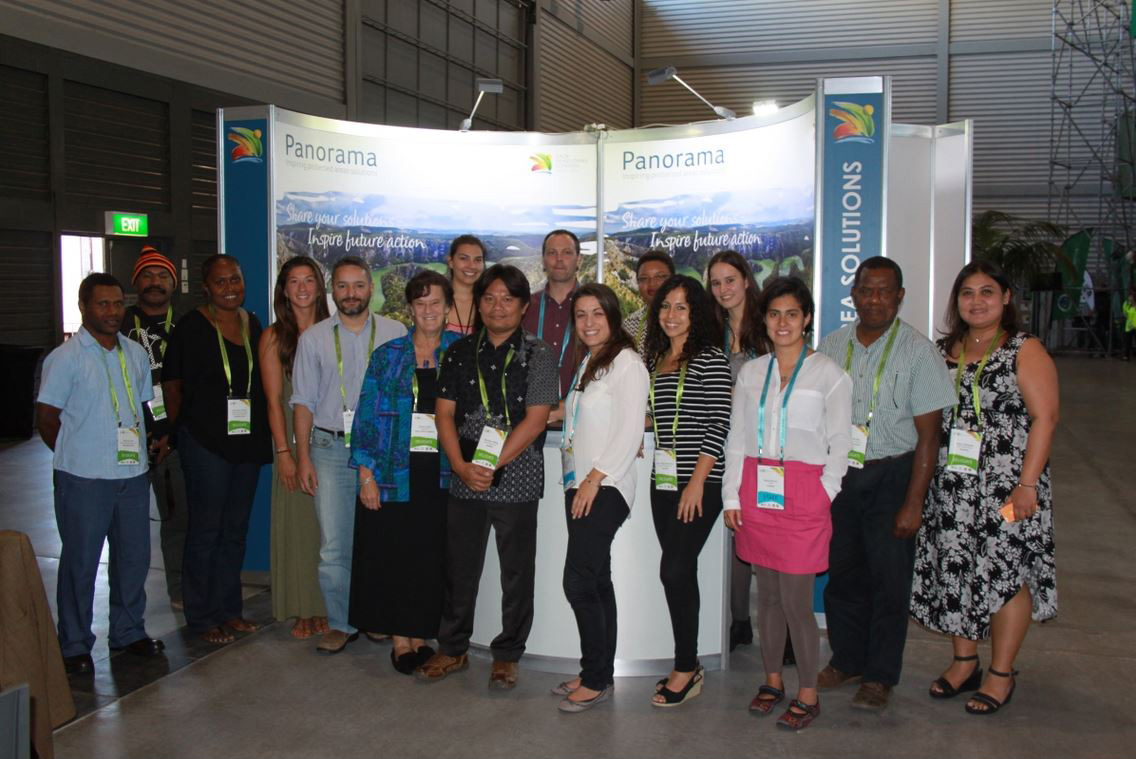 PANORAMA Ambassadors at IUCN World Parks Congress Australia, 2014
Photo: IUCN
PANORAMA Ambassadors at IUCN World Parks Congress Australia, 2014
Photo: IUCN
It was after the agreement of the 2010 Aichi Targets, 20 global biodiversity goals set by the Parties to the Convention on Biological Diversity, that several agencies began to promote the idea of shifting focus from learning from conservation failures to replicating successes.
Shortly thereafter, Blue Solutions, a global knowledge sharing project focused on marine and coastal ecosystems led by GIZ, started in 2013. But Blue Solutions was designed to focus on the marine environment, its scope did not include conservation and sustainable development activities based on dry land.
The IUCN World Parks Congress in 2014 marked a significant shift in the perception and approach towards conservation, emphasizing a more holistic view, "it was really the first time that protected and conserved areas were placed as part of a wider development narrative,” says Marie Fischborn, IUCN PANORAMA Coordinator.
“So those are not just sites that are about protecting endangered species and ecosystems and the services they provide,” Marie continues. “They really also have benefits in terms of… carbon storage and climate adaptation and human development, as well as socio-economic benefits, such as providing income and employment for people. And that narrative was quite new at the time.” As part of the outcomes of the Congress, IUCN and partners started building up a portfolio of “inspiring protected area solutions”, or case studies that illustrate how protected and conserved areas provide these wider benefits.
This led to the launch of a prototype web platform in 2015 where the name PANORAMA emerged. At first this beta platform primarily hosted Blue Solutions case studies, but it was expanded and adapted to become the current website that solution providers and development practitioners have come to know and love since it’s official launch in 2016.
Since then, PANORAMA has grown tremendously, with new Communities, or interlinked themes, being added regularly – growing from the initial two themes (marine and coastal; protected and conserved areas) to seven in 2020, and 11 by 2022. From a modest 7,800 visits in 2016, the web platform has expanded its reach to around 250,000 visits annually. PANORAMA is now widely recognized as a valuable resource, an initiative that is uniquely placed to connect local solutions from the field with global policy processes, making practitioner knowledge available like few others do.
“The scope of ‘Solutions’ within PANORAMA is broad, encompassing themes ranging from biodiversity conservation to restoration, and sustainable urban development,” says Helga Mahler, GIZ PANORAMA Coordinator.
“This variety enables practitioners in different fields to find and adapt relevant strategies to their specific contexts,” she continues.
Many uses for PANORAMA
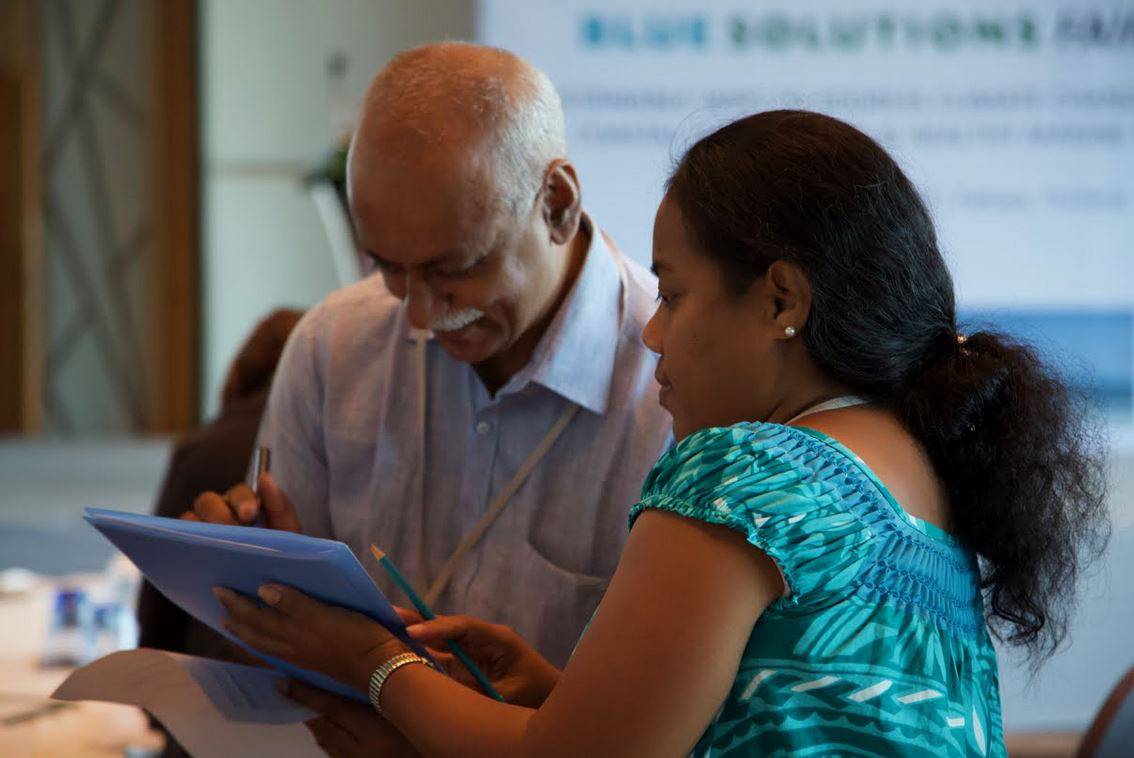 In-person knowledge exchange at the Blue Solutions Fair, Thailand 2018
Photo: GRID-Arendal
In-person knowledge exchange at the Blue Solutions Fair, Thailand 2018
Photo: GRID-Arendal
PANORAMA’s framework emphasizes the importance of replicable key ingredients or 'Building Blocks' in each solution, ensuring their adaptability across different geographies and themes.
Mirjam de Koning, an expert on natural resources management with over 20 years of experience managing nature conservation projects, has been contributing to PANORAMA since the early days.
“I really thought it was great to have a platform to gather experience from people, practitioners that work in the field and are not always going to all these seminars, webinars, congresses and leaving their footprints,” says Mirjam.
But beyond sharing her conservation work on the PANORAMA platform, de Koning explains how the act of breaking her work down into ‘Building Blocks’ and explaining what made it a success in simple terms “gives you a mechanism to reflect.”
After Mirjam contributed her management work in the Hin Nam No National Protected Area in Lao PDR as a solution on the PANORAMA platform, and presented it in webinars, she decided to bring this simpler break down of their work back to the team.
“And then my team said, well, after five years working together, this is so clear,” says Mirjam. “It's so clear, we should share it with others.”
And they did just that.
Since then, other protected areas in the region have been inspired to adopt some building blocks of the management structure of Him Nam No National Protected Area, creating a positive ripple effect that has been enabled, in parts, by the PANORAMA approach.
But the work doesn’t end after a solution is online, “it's very important to update them to the real situation again, but also try to capture a little bit how things evolved,” says Mirjam, who goes back to her solutions every so often to update and reflect.
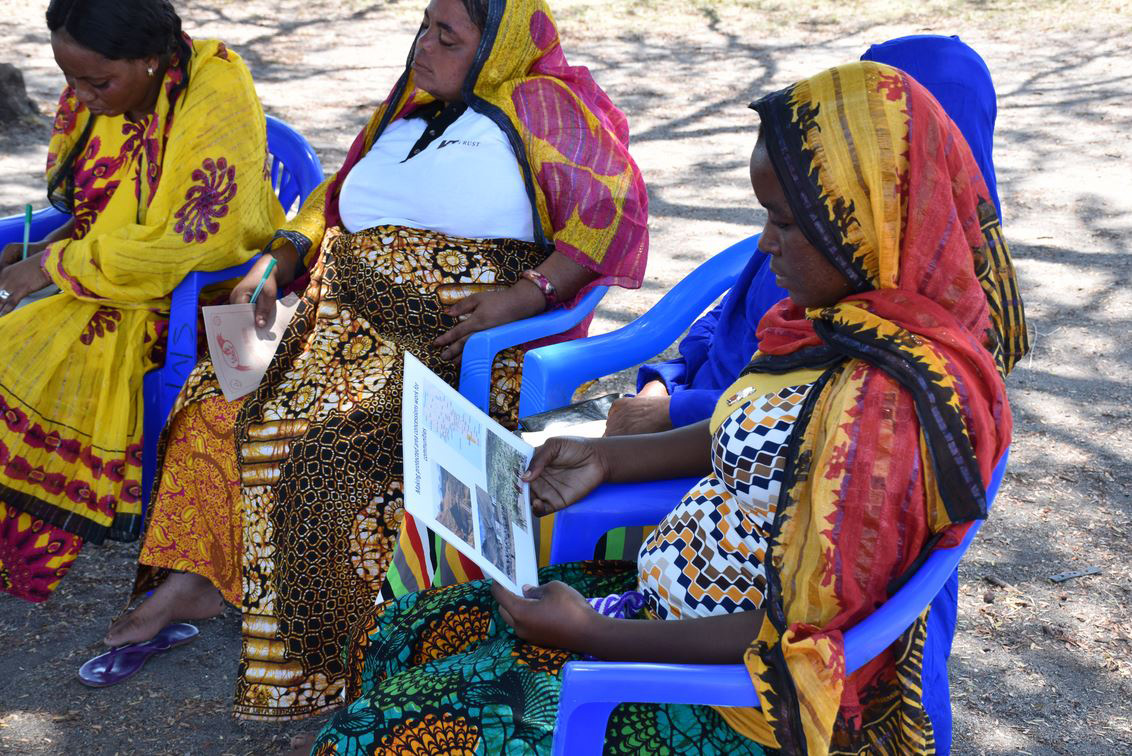 Discussion with communities in Saadani National Park (Tanzania), on existing PANORAMA solutions relating to ecotourism and protected areas, 2015
Photo: Bruce Downie
Discussion with communities in Saadani National Park (Tanzania), on existing PANORAMA solutions relating to ecotourism and protected areas, 2015
Photo: Bruce Downie
The simplicity of PANORAMA is truly where its strength lies, as exemplified by Paulina Karimova's integration of PANORAMA solutions into her academic work.
As a postdoctoral researcher at the Forestry Bureau and National Dong Hwa University, Paulina leverages PANORAMA case studies to enrich her teaching, bringing real-world conservation scenarios into the classroom. "We started using PANORAMA for that particular purpose," says Paulina, highlighting the platform's role in breaking down positive conservation projects and their challenges, “especially blue solutions because you don't see a lot of them,” she adds.
This approach not only facilitates learning but also stimulates critical thinking among her Taiwanese students, for whom English is not their first language. Despite the language barrier, "it was intuitive and easy enough to go on the platform and source the solutions," she notes, emphasizing the accessibility and impact of PANORAMA's content.
Another PANORAMA Ambassador and dynamic user of the platform is Obongha Oguni, the Founder and Director of AfERA Alliance in Nigeria and a dedicated conservationist and advocate for a rights-centred approach to environmental and climate action.
He discovered PANORAMA while searching for innovative and successful conservation strategies. This exploration led him to integrate various solutions from the platform into his work. "The platform opened up a world of possibilities," Obongha remarks, reflecting on how PANORAMA's diverse case studies have broadened his perspective.
Obongha particularly values the platform for its detailed case studies. These case studies serve as a rich resource for him, providing concrete examples and methodologies that can be adapted and applied to his local context. "It's like having a global toolkit at your fingertips," he explains.
Notably, he also leverages the platform for policy development. By analysing various solutions, he gains a deeper understanding of what has worked in different environmental contexts. This knowledge is invaluable in shaping effective and sustainable environmental policies in his region. "Each solution on PANORAMA is a lesson in environmental stewardship," he says, highlighting how the platform has been instrumental in informing his approach to policymaking.
The path forward
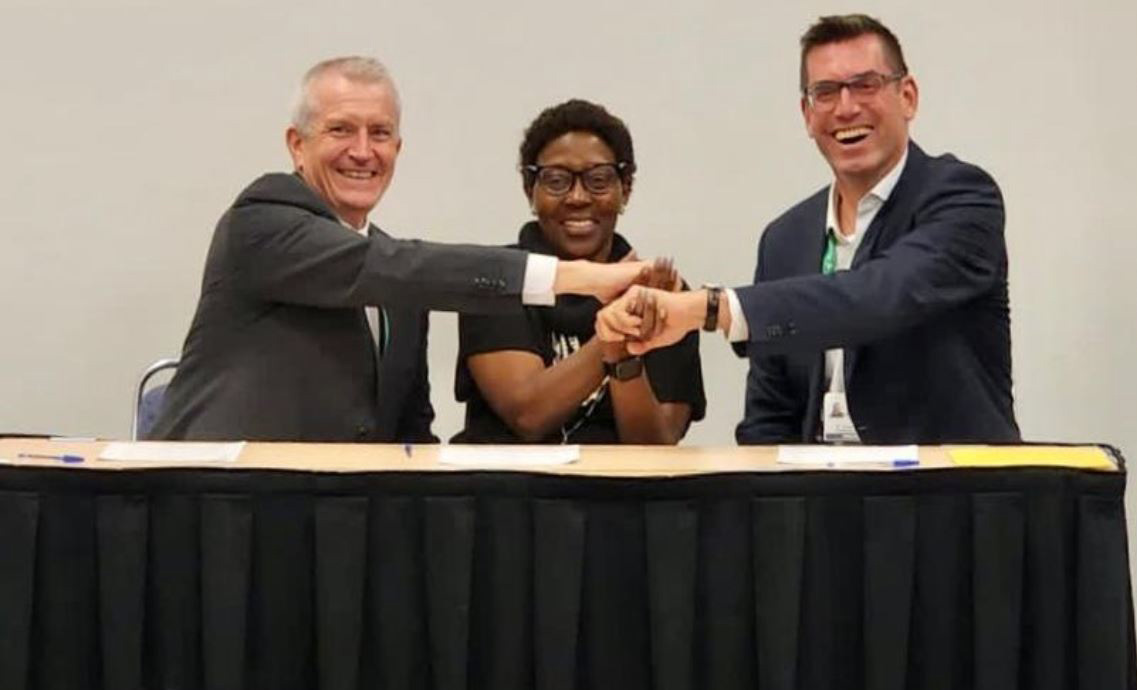 Signing of a Memorandum of Understanding with the CBD Secretariat to collaborate on knowledge management, 2022
Photo: IUCN
Signing of a Memorandum of Understanding with the CBD Secretariat to collaborate on knowledge management, 2022
Photo: IUCN
Marie reflects on how far PANORAMA has come, “the first Blue Solutions project Steering Committee meeting that I attended back in 2014, we talked about what could be our target for these blue solutions and I think we set ourselves a target of 30 by the end of the project,” she continues. “We have over 1,400 solutions, from many topics, as of today… It's grown beyond what anybody has ever expected in the beginning.”
“The significant advantage of having over a thousand solution providers in PANORAMA is rooted in their diverse perspectives and experiences,” says Helga. “This diversity is not just enriching; it catalyses a dynamic exchange of ideas, which is pivotal in shaping solutions that are both innovative and flexible, crucially contributing to our ten-year journey of impactful environmental action.”
PANORAMA has come a long way and is now moving into the next phase in its strategic growth, becoming “PANORAMA 2.0”. The PANORAMA initiative can play a pivotal role in implementing the Global Biodiversity Framework by serving as a hub for knowledge exchange, showcasing successful solutions, inspiring innovation, valuing local knowledge, informing decision-making and fostering collaboration.
Looking forward, the team aims to continue expanding the thematic scope and partner base. This growth is underpinned by a commitment to inclusivity, ensuring participation from diverse sectors and regions.
The vision for PANORAMA also involves a strategic shift towards partnering directly with countries, aiming to deepen its impact on a national level. "Our goal is to engage more intensively with specific countries, tailoring PANORAMA’s approach to national needs and priorities," Marie explains. "By working closely with national governments and stakeholders, we can ensure that the solutions and knowledge shared on PANORAMA are directly contributing to the countries' biodiversity and sustainability targets." This approach, she believes, will foster a stronger, action-oriented community around conservation and sustainable development.
This necessitates a focus on making PANORAMA more linguistically diverse. Helga explains, “in a commitment to inclusivity, we are breaking language barriers by enhancing our platform's multilingual capabilities.”
As PANORAMA marks a decade of its existence, its role in the modern conservation and sustainable development landscape becomes increasingly vital. Its story is marked by steady growth and collaborative efforts. This journey stands as a testament to the power of collaborative solutions in addressing global environmental challenges.
PS: Are you wondering which is the most viewed PANORAMA Solution of all time? Check it out here!
We thank everyone who agreed to be interviewed for this story!
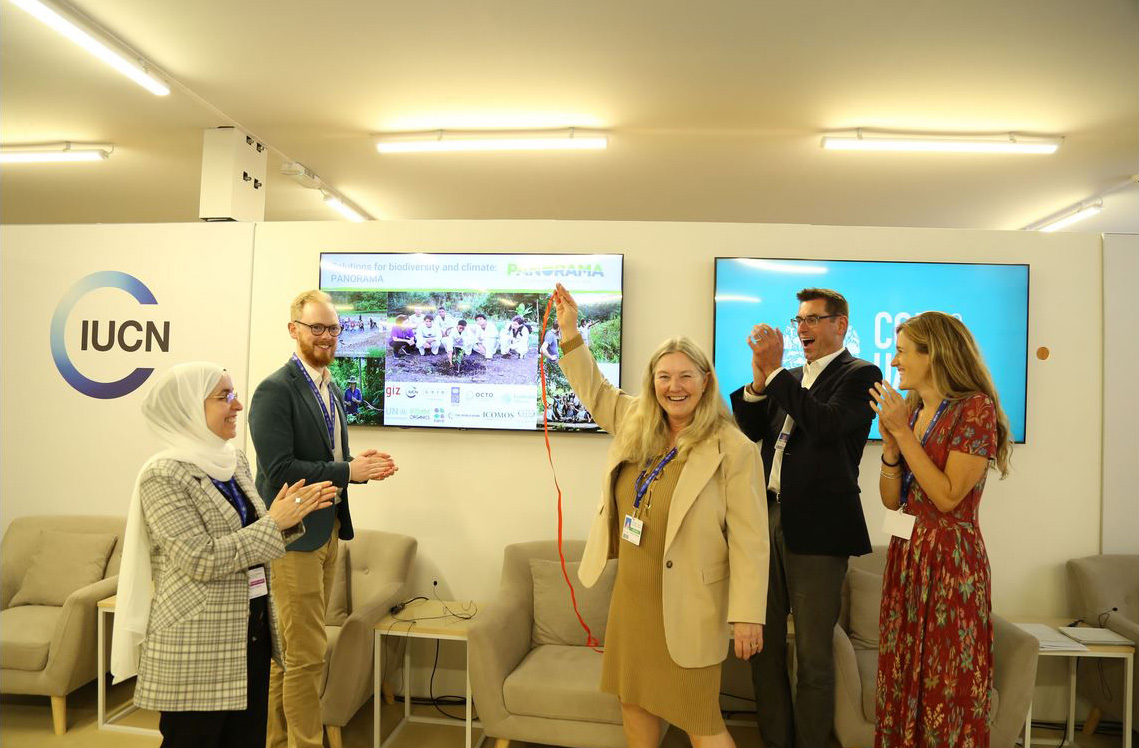 Cutting the ribbon for the new PANORAMA beta platform during UNFCCC COP28 (from left to right: Dr. S. Marwan Shahin, Assistant Professor, Umm Al Quwain University; F. Stapke, Senior Manager – Global Development, Rare; S. Pedersen, Director, Centre for Science and Data, IUCN; J. Renger, Head of Department – Climate, Rural Development, Infrastructure, GIZ; C. Monaco, Director of Ecological Restoration and Biodiversity, Eco House Global)
Photo: IUCN
Cutting the ribbon for the new PANORAMA beta platform during UNFCCC COP28 (from left to right: Dr. S. Marwan Shahin, Assistant Professor, Umm Al Quwain University; F. Stapke, Senior Manager – Global Development, Rare; S. Pedersen, Director, Centre for Science and Data, IUCN; J. Renger, Head of Department – Climate, Rural Development, Infrastructure, GIZ; C. Monaco, Director of Ecological Restoration and Biodiversity, Eco House Global)
Photo: IUCN



